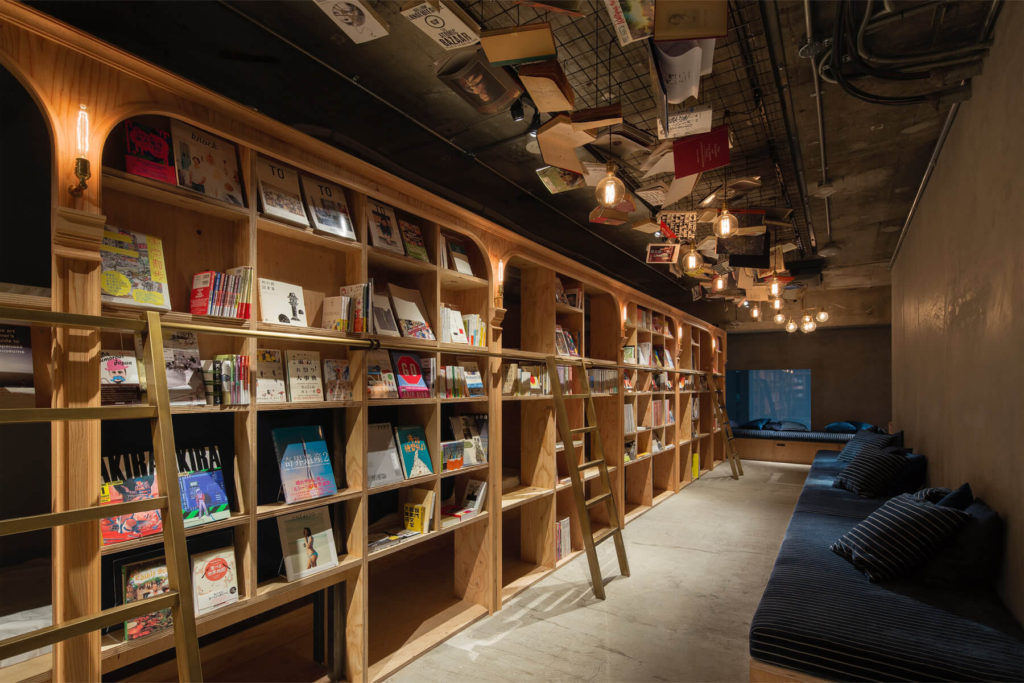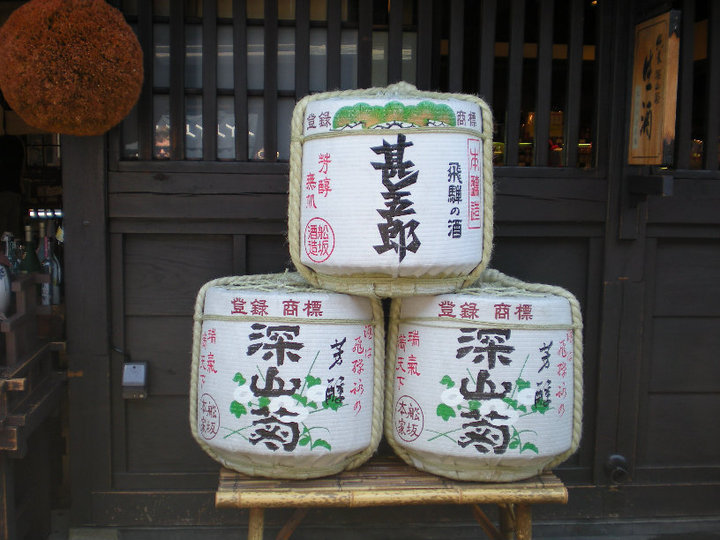Experiencing Japan: The Yin and Yang of Tokyo and Kyoto
Tokyo’s Shibuya Crossing makes New York City’s Times Square look like a suburb with its non-stop sea of pedestrians and neon grid so tantalizing it would even make Las Vegas blush. Tokyo certainly takes the cake for flying its freak flag in the most amazing way. Maid cafes, vending machines with *cough* questionable items sold, and all the sushi a gal can eat. Then there is Kyoto, the yin to Tokyo‘s yang. With magical shogun-era temples and monkeys that you can hand-feed, Kyoto will fulfill your Spirited Away fantasies. Visiting both Japanese cities in the span of a few days is totally doable and worth the Shinkansen bullet train ride. Here is what to do, and where to eat and stay as you whirl through Tokyo and take a break to exhale in Kyoto.
Tokyo
Tokyo is the epitome of sensory overload: the electricity as you pass through Shinjuku station amidst the sea of commuters; shoving onto a train with a 100 plus foreign strangers; following signs in Kanji in order to navigate the city’s metro system, sprawling and cavernous. The confusion is enough to overwhelm even a seasoned globe trotter. Tokyo is for the traveler who prefers wandering into the unknown.
The ways to get lost in Tokyo are innumerable. Beyond the major attractions like Tokyo Tower and Tsukiji Fish Market lives the Tokyo a citiphile craves. Much like NYC, it prides itself in hidden gems and insider events. Sure, you can go to the Robot Show or pay a whopping 30,000 ¥ to eat at Jiro’s sushi store, but you can also try these suggestions…
This indoor urban farm used to be a bank vault turned headquarters recruitment company, Pasona. The office building has integrated gardens throughout for its employees to grow their own food. The farm uses Hydroponic and traditional soil techniques to grow a variety of species. O2 was built as an attempt to highlight Japan’s reliance on foreign crops; it currently imports over 50 million tons annually. The underground space houses 43,000 square feet of farmland and around 200 species or fruits, grains, and veggies. Take a free tour of this urban oasis on weekdays.
Finding culture and art in Tokyo is simple. The whole city is a tribute to function and aesthetics as modern architectural feats blend seamlessly with temples and shrines. The Japanese prize simplicity and integrating nature into their lives. This ideal is showcased beautifully at the Nezu Museum. Stroll through the perfectly preened garden or take in pre-modern textiles and calligraphy. The museum will instantaneously transport you to another era and help you achieve that sought-after state of Zen.
With its vast alleyways and slums, Tokyo, it’s the perfect city for some sinister activity. Haunted Tokyo Tours will gleefully guide you through the backstreets and show you where Samurai spilled blood. Take the Demons of the Red Light District tour to hear stories of betrayal and tragedy. They also offer a family friendly version of a ghost tour for those with kids, or for those who can’t stomach the darker ghouls.
Taito HEY is one of the most popular arcades in the Akihabara district. With “shmups” galore and the legendary “Flip the table” game, Taito still reigns supreme in the gaming world. If you are looking for sticker photo booths, crane games where you can collect anime figurines or old school Sega, this is where it goes down. Be prepared to stand in line to get in. There are often lines around the block waiting for any arcade to open, especially when a new game is released.
Honorable mention: If you don’t like the classic arcade style consoles or want to do some gambling in Tokyo, try any Pachinko Parlor in Shibuya.
Theme cafes are a subject unto themselves. If you can think of a theme that needs to be made into a cafe, Tokyo has probably already has it. Cat Cafes (which started here) are amazing, but you haven’t lived until you’ve gone to the Owl or Reptile Cafe. The general rule of thumb: if it’s a cute animal, it needs to be put in a cafe to commune with the caffeine addicts of the world. Maid Cafes are always fun, and you will drink and eat the most “Kawaii” delicacies when visiting one. Want something more macabre? Try The Lockup: Dungeon Cafe, where you will drink out of test tubes and sit in a cell with screams and creatures haunting you. The level of commitment among the staff has at the Dungeon cafe is the stuff of any Oscar-winning performance.
 Take your pick for bedtime reading. Photo Credit: Book and Bed Tokyo.
Take your pick for bedtime reading. Photo Credit: Book and Bed Tokyo.
Book and Bed Tokyo opened in September of 2015 and is giving nourishment to bibliophiles. You can cozy up to a good book pulled from the shelf of your living quarters and dream of literary adventures. For ¥ 4,500 a night, guests stay in a “standard” sized bunk surrounded by books. The bunks themselves are situated within the bookshelves. This hostel is conveniently located in the heart of Ikebukuro and is a great experience for those looking to fall asleep amongst the stacks.
From Shabu Shabu at Seryna to Tempura Nakasei in Asakusa, you can easily – and should – eat your weight in food while in Tokyo. There are so many places to find delicious grub and while we can’t list them all, here are a few noteworthy options. “Piss Alley” in Shinjuku isn’t easy to find but once you do, you’ll be in Yakatori heaven. Hidden amongst the flashy shops of Shinjuku, Omoide Yokocho (Memory Lane) is the entrance to the infamous “Piss Alley”. The food is mouth- watering-good, and the tiny shops, while crowded, are worth squeezing into. If sushi is your speed, try Uobei. Sushi in Tokyo is not cheap, unless you are up for the more relaxed atmosphere of the Kaiten “conveyor belt” style restaurants. Uobei takes it to the next level by sending fresh sushi to your table via a chute vs. the merry go round of fish you get at a Kaiten. It’s cheap, fast and good fun.
Kyoto
After Tokyo, you’ll be ready to take it down a notch. Grab your JR Pass, a Daifuku cake, down some matcha and enjoy the smooth ride to Kyoto.
Even though a larger city than Tokyo, Kyoto is delightfully walkable. The city’s moss covered buildings and lush bamboo groves create an atmosphere straight out of a fairytale. While Kyoto is chalk full of world heritage sites (17!), there are other equally impressive sites like Fushimi-Inari-Taisha Shrine and the Imperial Palace that make it a rich historical place to visit. Then there’s Kyoto’s impressive arts scene, abundant with various Geisha, Kabuki, and Noh entertainment. Want to try a traditional tea ceremony? Kyoto is the place to learn about the profound meaning of each pour and move of the Hakobi-Temae ceremony. A visit to Kyoto is to step back in time and experience Japanese tradition at its finest.
Arashiyama Iwatayama Monkey Park
Do not stare at the monkeys! Feed them all you’d like, take pictures of them sitting on top of motorcycles but adore them without staring into their adorable eyes. Arashiyama Monkey Park often gets overlooked by visitors, which is a shame, because it’s a great way to interact with animals in their natural habitat. You walk up to the top of the mountain, to an enclosure where the Macaques reside. Walk among them and can even hand-feed them with supervision. The only rule? No staring. Direct eye contact makes Macaques feel intensly threatened, and it is their home after all so guests ought to be respectful.
Explore the Fushimi Sake District
Delicious and mellow, the way sake should be. Kyoto is no stranger to the rice-wine game, and the Fushimi district is the place to explore if you want to, respectfully, get your ‘drank’ on. Gekkeikan is the oldest and best known of the breweries, but others like Matsui Sake Brewery and Ginjo Shubo Aburacho house local and lesser-known libations. There’s even a nearby sake museum for those who want to learn more about the production and history.
The shopping arcades in town are very real and very kitschy. Shijo-dori is the main street that runs through the Gion district, and it’s where you can grab your Daruma doll or a pair of Nike sneakers. If you walk through the traditional part of Gion’s back alleyways, you might even see a Geisha. Don’t hold your breath, though, these elusive beauties are heavily guarded and not on display for the public. If you do catch a glimpse, it will be of her shifting between backdoors with a parasol, bodyguards shielding her from your wandering eye.
The best way to live it up in Kyoto is by staying in a traditional Ryokan. Hot spring baths have long been believed to have healing properties and are incredibly relaxing. Momijiya Bekkan Kawa no Iori, Takao was recently voted the top Ryokan in Japan by Selected Ryokan. A 15-minute train ride transports you to the inn, which overlooks Lake Takao and is nestled amongst mountains. There are plenty of HOW MANY rooms with open-air baths and the inn serves the traditional Kaiseki courses and local delicacies. Make sure to read up on Onsen customs before going in order to be respectful of the culture.
If a traditional Ryokan isn’t your style and you want a mixture of the old and new, Hotel Mume is the perfect blend. Mume’s name comes from the Japanese word for “apricot,” and their room concepts center around nature. This is a fitting tribute for the lodge, which is perched on the banks of the Shirakawa River. Guests can stay in the Flower, Butterfly, Moon or Wind room. The hotel is intentionally small and cozy, so be sure to book your room well in advance.
You really can’t eat bad ramen in Japan. This may seem like an obvious statement, but it must be said. The best advice is to walk down any street in town and, if you see somewhere that looks delicious, try it! Or, once you hop off the train at Kyoto station, go to the 10th floor, and you’ll come across Kyoto Ramen Koji. Consisting of eight ramen restaurants, you select your ticket from a vending machine in front of your restaurant of choice, then wait for hot, soy filled goodness to arrive. You can choose from a variety of styles and flavors, which makes this a perfect spot for those who want to try it all.
Indiana Jones didn’t go to Japan, but if he did, plenty of adventures would await in the temples of Kyoto. You can’t walk down the street without running into a temple or shrine. While Kinkaku-ji, Nazin-ji, and Ginkaku-ji are some of the biggest attractors, you can spend a whole day temple hopping to smaller ones as well. Fushimi Inari-Taisha Shrine is most famous for its long and winding torii gate walk, and Sanjūsangen-dō holds the Army of a Thousand Armed Kannon Statues. There are over 2000 templates and shrines in Kyoto, so you can plan one day to a lifetime visiting them.


